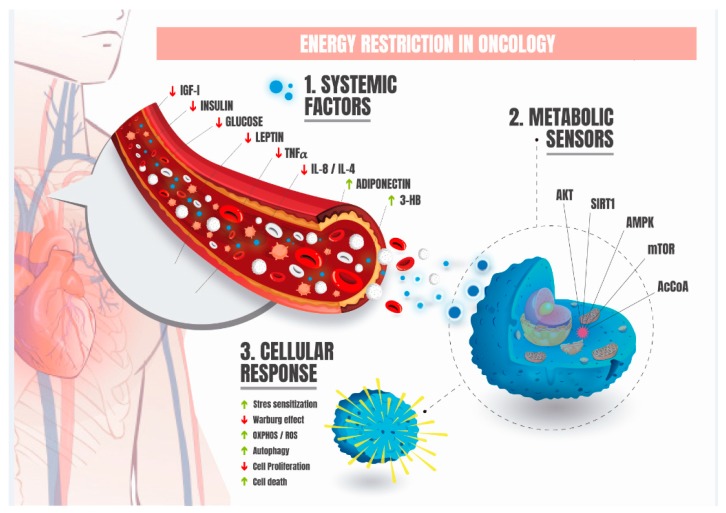Figure 2.
Overview of the fundamental characteristics of energy restriction in oncology. (1) Systemic factors: health-associated circulating factors modulated by energy restriction with potential implications for cancer prevention or treatment are depicted. (2) Metabolic sensors: intracellular nutritional sensors regulated by ER with the capacity to synchronize the nutritional status and levels of systemic factors with the cellular response. (3) Cellular response: activation of metabolic sensors triggers transcriptional programs and cellular physiological responses that play major roles in the context of carcinogenesis. Note: IGF-1 = insulin-like growth factor 1; TNFα = Tumor Necrosis Factor alpha; IL = Interleukin; 3-HB = 3-Hydroxybutyrate; AKT = Protein Kinase B; SIRT1 = Sirtuin 1; AMPK = AMP-activated protein kinase, mTOR = mammalian target of rapamycin; AcCoa = Acetyl coenzyme A.

